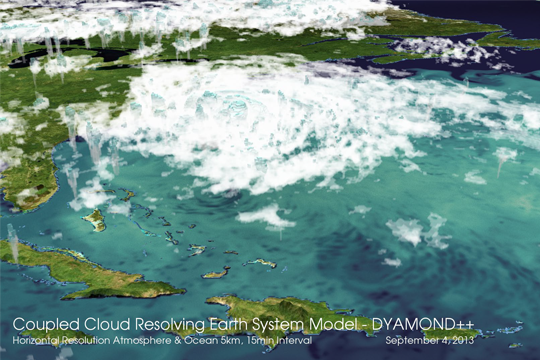09.09.2021
Heil, A., Ganske, A., Lammert, A., Heydebreck, D., and Thiemann, H.: The ATMODAT Standard enhances FAIRness of Atmospheric Model data, EMS Annual Meeting 2021, online, 6–10 Sep 2021, EMS2021-298, https://doi.org/10.5194/ems2021-298, 2021.
Atmospheric Model data form the basis to understand and predict weather, climate and air quality phenomena. Access to this data is not only of interest to a wide scientific community but also to public services, companies, politicians and citizens. One way to make the data available is to publish them via a data repository. To ensure that datasets in a repository are indeed Findable, Accessible, Interoperable, and Reusable (i.e. FAIR1), it is essential that the data are stored together with detailed metadata and that the file structure and metadata follow an established standard. Furthermore, datasets are easier to find and reuse if the corresponding metadata is machine-readable and uses a standardised vocabulary. While data standardization is well established in large, internationally coordinated model intercomparison projects (e.g. for climate models in CMIP2), joint standards are still lacking in many atmospheric modelling sub-disciplines, such as e.g. urban climate or cloud-resolving modelling.
The AtMoDat project (Atmospheric Model Data)3, led by a team of atmospheric scientists and infrastructure providers, aims to improve the overall FAIRness of atmospheric model data and thus promote their re-use. Within the project, the ATMODAT standard4 has been developed which includes precise recommendations to achieve enhanced FAIRness of atmospheric model data in repositories. A prerequisite of this standard is that the data are published with a DataCite DOI5. The ATMODAT standard specifies requirements for rich metadata with controlled vocabularies, structured landing pages, file formats (netCDF) and the structure within files. Human- and machine-readable landing pages holding discipline-specific metadata are a core element of this standard.
The ATMODAT standard is easy to implement and provides checklists for data curators and data producers. In addition, to facilitate the compliance check with the ATMODAT standard, the atmodat data checker6 has been developed. A dataset that complies with this standard will follow the FAIR principles and its metadata will be of high quality. If this compliance has been verified by the respective repository, the dataset can be labelled with the Earth System Data Branding (EASYDAB)7. This branding makes it easy for users to verify that the data are properly curated and the metadata has been quality assured.
1 Juckes et al., 2020: https://doi.org/10.5194/gmd-13-201-2020
2 Eyring et al., 2016: https://doi.org/10.5194/gmd-9-1937-2016
3 www.atmodat.de
4 https://doi.org/10.35095/WDCC/atmodat_standard_en_v3_0
5 https://datacite.org
6 https://github.com/AtMoDat/atmodat_data_checker
7 https://easydab.de
